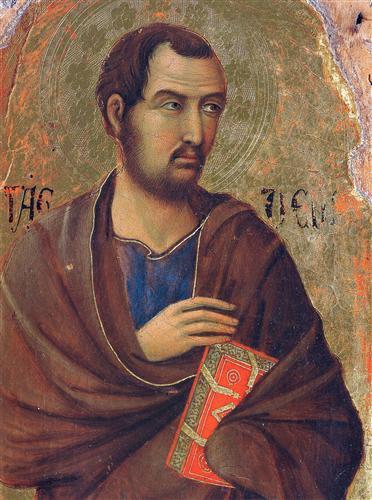Stephen Morris's Blog, page 42
August 17, 2015
Horses… Giddyup!

Mr. Ed, the talking horse who only ever conversed with Wilbur, was one of my favorite tv shows growing up. Mr. Ed appeared on Sunday evenings, just before (or after?) “My Favorite Martian.”
When most people think of HORSES in mythology or folklore, they think of winged horses like Pegasus or wooden horses like that offered to the Trojans by the Greeks or talking horses like Mr. Ed (seen above). Few people think of horses in connection with mermaids!
But horses and cows were often seen in the company of mermaids, according to the old stories. Mermaids were set to watch the herds of horses and cows belonging to the sea gods just as shepherds were set to watch flocks of sheep and goats on the hillsides. Mermaids would lead the horses and cows up onto shore from the depths of the sea and then gain legs for themselves by removing a cloak. After allowing the cattle or horses to graze along the shore, the mermaids would wrap themselves in their cloaks again and lose their legs, thus regaining their fish tails and would lead the animals back into the sea.
Many times a mermaid would reward an act of kindness by giving a human a magical horse or cow that was especially strong, beautiful, and fertile. These cows from the depths of the Otherworld would mingle with the poor or sickly cows of a farmstead and restore the earthly herds to health and fertility. These magically restored herds often brought great wealth to the human farmers. But if the humans ever harmed the Otherworld animal, it would vanish and take all its progeny with it and the humans would be reduced to poverty once more as a result.
It was sailors or other men who saw the mermaids and the horses/cattle come ashore who might steal the mermaid’s cloak and thus render her unable to return to the sea. She would often then marry the man who had stolen the cloak and thus kidnapped her and even live with him happily for many years. But she would never age and would finally find the cloak that the man had hidden somewhere in the house. She would wrap herself in the cloak and hurry back to the sea and return to her true home beneath the waves.
Horses were also especially associated with the goddesses who brought both fertility and who lead the dead into the Otherworld in Celtic mythology. Because a goddess could bring life and health and prosperity, she could also take them away and leave illness and death in her wake. Horses, especially purebred white horses, were considered the steeds of the goddess and were both desired and feared by horse traders.
Florus and Laurus, twin brothers who were second century martyrs, are considered the patrons of horses among the Rus because a local horse plague was healed by their relics. Russian peasants would tether their horses around the church on their feast day (August 18) and avoid putting the horses to work in order to avoid a recurrence of the plague.

An icon from Novgorod (15th century) showing SS. Florus and Laurus with the horses.
The post Horses… Giddyup! appeared first on Stephen Morris, author.
August 10, 2015
Dormition

Fra Angelico painted this depiction of the Dormition of the Virgin in 1431-2.
The Dormition of the Mother of God, commonly called the “Assumption” by Western Christians, celebrates the falling-asleep of the Mother of God on August 15 and her translation into glory at the right hand of her Son. This deathbed scene is often depicted in Orthodox icons and medieval Western paintings (such as Fra Angelico’s seen above) with Mary dying as the apostles surround her deathbed and Jesus gathers her soul into His arms like a new-born child (similar to the way He is depicted in swaddling bands at Christmas). It has been said in at least a few sermons that, “If Christmas is God’s birthday into humanity, then Dormition is Humanity’s birthday into divinity.”
As part of the Dormition celebration, flowers and fragrant herbs are brought into the church to be blessed. This aspect of Dormition celebrates the harvest going on in the fields outside the churches and the “harvest” of each human life on their deathbed. This harvest and gathering into glory of each human life to await the End Times or Last Judgment gives the practical duties of farmyard duties a very apocalyptic or eschatological flavor. (Apocalypse and eschatology relate to “End Times” and “Last Things.”) This human harvest is celebrated again at the end of the farmyard harvest season with Halloween and the Day of the Dead in November.
The flowers and herbs blessed on August 15 are thought to disperse devils by their fragrant scent and to keep devils from tripping the soul of a dying person if they are placed around the deathbed.
The post Dormition appeared first on Stephen Morris, author.
August 3, 2015
Lammas Day

Bread made of the flour from newly-harvested wheat would be brought to church on Lammas Day to mark the beginning of autumn.
Lammas Day (August 1) is the traditional day to mark the beginning of autumn. Who wants to think about autumn before Labor Day?! But the back-to-school sales have started, so maybe… The wheat harvest begins at this time and the loaves baked with the newly-harvested wheat would be brought into church to be blessed. Hence, “Loaf-Mass Day” or Lammas Day. It also might be the more sedate, English version of the Irish-Scotch celebration of Lughnasadh.
In medieval times the feast was sometimes known in England and Scotland as the “Gule of August” but the meaning of “gule” is unclear. Some think “Gule” is derived from Gŵyl Awst, the Welsh name of the “feast of August”. Others think “Gule” is derived from “gullet” or “throat” and is associated with chewing/swallowing the blessed bread or other newly harvested food.
Some also think “Lammas” is derived from “Lamb-Mass” at which the new sheep would be blessed and then shorn for the first time. Or that a lamb would be let loose in the fields for one of the field-workers to catch, making a game out of the work. The winner field hand would bring the lamb he caught into church to be blessed. (The lamb associations with Lammas seem especially strong near York in the north of England.)
In Shakespeare’s Romeo and Juliet (1.3.19) it is observed of Juliet, “Come Lammas Eve at night shall she [Juliet] be fourteen.” Since Juliet was born on Lammas eve, she came before the harvest festival, which is significant since her life ended before she could reap what she had sown and enjoy the bounty of the harvest, in this case full consummation and enjoyment of her love with Romeo.
See a previous post about Lammas here.
The post Lammas Day appeared first on Stephen Morris, author.
July 27, 2015
Lughnasadh

It was customary to harvest blueberries and bake blueberry pies at Lughnasadh festivities.
Lughnasadh (pronounced “Lúnasa”) is a Gaelic festival marking the beginning of the harvest season. Historically, it was widely observed throughout Ireland, Scotland and the Isle of Man. Originally it was held on 1 August, or about halfway between the summer solstice and autumn equinox. Lughnasadh is one of the four Gaelic seasonal festivals; along with Samhain, Imbolc and Beltane. It corresponds to other European harvest festivals such as the Welsh Gwyl Awst and the English Lammas.
In Irish mythology, the Lughnasadh festival is said to have been begun by the god Lugh as a funeral feast and athletic competition in commemoration of his mother who was said to have died of exhaustion after clearing the plains of Ireland for agriculture. Lugh’s mother may have been an earth goddess who represented the dying vegetation that fed mankind. These funeral games in her honor were similar to the ancient Olympic Games and included ritual athletic and sporting contests. The event also involved trading, the drawing-up of contracts, and matchmaking that included trial marriages (young couples joined hands through a hole in a wooden door). The trial marriage lasted a year and a day, at which time the marriage could be made permanent or broken without consequences.
Ancient customs associated with Lughnasadh seem to have also included offerings of newly-harvested corn, the sacrifice of a bull and certain rites with its hide as well as a banquet of the meat roasted.
Another custom that Lughnasadh shared with Imbolc and Beltane was visiting holy wells. Visitors to holy wells would pray for health while walking sunwise around the well. They would also leave offerings (often coins).
The post Lughnasadh appeared first on Stephen Morris, author.
July 20, 2015
July birthstone: Ruby

Rubies are the birthstone of July and are said to guarantee health, wisdom, wealth and success in love.
Rubies are associated with the sun and were thought to preserve mental and physical health. In the middle ages, rubies were viewed as a stone of prophecy. It was thought the stone darkened when danger was near. Ivan the Terrible of Russia stated that rubies were good for the heart, brain and memory. A 13th century prescription to cure liver problems called for powdered ruby. In the 15th-16th centuries, rubies were thought to counteract poison. When rubbed on the skin, they were also thought to restore youth and vitality.
If a ruby were cast into water it would cause it to boil, and if carved and pressed into wax, would melt the wax.
Although the most well-known magical rubies in modern society are the ruby slippers Dorothy wore in the Wizard of Oz movie, the slippers were silver inthe book. The silver shoes, however, did not show well against the yellow brick road inthe film and so the silver shoes were replaced with ruby slippers, which coukld be more clearly seen.
Take a look at my previous post about the ruby slippers in the Wizard of Oz, “I’ll get you, my pretty… and your little dog too!”
The post July birthstone: Ruby appeared first on Stephen Morris, author.
July 13, 2015
Dog Days of Summer

A period of hot weather in July, known as the Dog Days, is said to be a source of pestilence and disease.
The phrase “dog days” refers to the sultry days of summer, especially in mid-late July and August. The Romans referred to the dog days as diēs caniculārēs and associated the hot weather with the star Sirius. They considered Sirius to be the “Dog Star” because it is the brightest star in the constellation Canis Major (Large Dog); this linkage first appeared in the Greek poem Phaenomena by Aratus (310-260 BC) while Sirius’s association with summer heat is found in an earlier Greek poem, Works and Days by Hesiod in 700 BC.
Dog Days were popularly believed to be an evil time “the Sea boiled, the Wine turned sour, Dogs grew mad, and all other creatures became languid; causing to man, among other diseases, burning fevers, hysterics, and phrensies.” according to Brady’s Clavis Calendaria, in 1813.
The constellation Sirius was classically described as Orion’s dog. The Ancient Greeks thought that Sirius’s emanations could affect dogs adversely, making them behave abnormally during the “dog days,” the hottest days of the summer. The excessive panting of dogs in hot weather was thought to place them at risk of desiccation and disease. In extreme cases, a foaming dog might have rabies, which could infect and kill humans whom they had bitten.
Western Christian church calendars have even noted the Dog Days. According to the 1552 edition of the The Book of Common Prayer, the “Dog Daies” begin July 6 and end August 17. But this edition, the 2nd book of Edward VI, was never used extensively nor adopted by the Convocation of the Church of England. The lectionary of 1559 edition of the Book of Common Prayer indicates: “Naonae. Dog days begin” with the readings for July 7 and end August 18. This corresponds very closely to the lectionary of the 1611 edition of the King James Bible (also called the Authorized version of the Bible) which indicates the Dog Days beginning on July 6 and ending on September 5.
The post Dog Days of Summer appeared first on Stephen Morris, author.
July 6, 2015
Cancer, the birth sign of June-July

This depiction of the constellation Cancer (the Crab) is taken from the Celestial Atlas by Alexander Jamieson – 1822.
Although modern astrologers identify the sign of Cancer as a crab, it has been represented as various types of creatures, usually those living in the water, and always those with an exoskeleton.
The identification of Cancer as a crab is rooted in the Twelve Labors of Hercules tale. Hercules battled the multi-headed Lernaean Hydra and Hera had sent a large crab to distract Hercules and put him at a disadvantage during the battle. But Hercules quickly dispatched the creature by kicking it with such force that it was propelled into the sky. Other accounts say the crab grabbed onto Hercules’ toe with its claws, but Hercules simply crushed the crab underfoot. Hera, grateful for the creature’s heroic effort, gave it a place in the sky. (Some scholars have suggested that the crab was a late addition to the myth of Hercules in order to make the Twelve Labors correspond to the twelve signs of the Zodiac.)
In the Egyptian records of about 2000 BC, the Cancer sign was described as Scarabaeus (Scarab), the sacred emblem of immortality. In Babylonia the constellation was known by a name which can refer to both a crab and a snapping turtle. There also appears to be a strong connection between the Babylonian constellation and ideas of death and a passage to the underworld, which may be the origin of these ideas in much later Greek myths associated with Hercules and the Hydra. In the 12th century, an illustrated astronomical manuscript shows it as a water beetle. Albumasar writes of this sign in the work published in 1489 as a large crayfish. Jakob Bartsch and Stanislaus Lubienitzki, in the 17th century, described it as a lobster.
Those born during the Cancer period (June 22–July 22) are said to be emotional and intuitive but shrewd.
IF YOU LIKED THIS POST ABOUT THE FOLKLORE & OCCULT QUALITIES ASSOCIATED WITH CANCER THE CRAB, CLICK HERE TO SEE MY FANTASY NOVELS IN WHICH ALL THE MAGIC AND SUPERNATURAL EVENTS ARE BASED ON AUTHENTIC MEDIEVAL-RENAISSANCE OCCULT BELIEFS AND PRACTICES.
The post Cancer, the birth sign of June-July appeared first on Stephen Morris, author.
June 30, 2015
Everything Was Beautiful… at the Ballet!

The lobby of the Metropolitan Opera at Lincoln Center, where the American Ballet Theatre performs.
Every year we get season tickets to the spring-summer fairy tale performances of the American Ballet Theatre at Lincoln Center. This year’s season included La Bayadere, Sleeping Beauty, Romeo and Juliet, Swan Lake, and just concluded with the stunning production of Cinderella. Every year I fall in love with these stories and the music all over again — although the new production of Sleeping Beauty this year was very disappointing: the performances by the dancers were spectacular but the choreography itself and the costumes/sets were not exciting.
Cinderella’s tale is, of course, one of the best known fairy tales in the English-speaking world although there are so many variants of it from so many cultures that it probably ranks as one of the best known tales anywhere. (One version has been traced back to Egypt in 7 B.C.) For an interesting article on the history of the tale, click here.
One aspect of the story that is hardly discussed is the likelihood of anyone ever really having a godmother or godfather who was a fairy. In standard Christian practice, a godparent must be a baptized member of the Church and promises to raise the newly-baptized child in the faith. This means that a non-Christian was not eligible to serve as godmother or godfather. For a fairy to be eligible to serve as godmother, the fairy would have to have been a baptized convert to Christianity — a highly unlikely possibility as baptismal/holy water was considered anathema to fairy folk and immersion or sprinkling with the consecrated water would have incinerated the fairy! If a fairy DID convert and survived the baptism, this raises two questions. One was WHY would a fairy convert to Christianity? The other was much larger and did actually impact theology: fairies were non-human and there were serious questions in medieval western Europe about whether non-humans (ex. animals, who had no souls or angels, who had no bodies) could be saved. A fairy godmother — if one were to actually exist — would force many theologians to rethink their basic assumptions of how God works in the world.
But still, who hasn’t wanted a fairy godparent looking over their shoulder to protect them at least once in a while?!

My partner Elliot and I on the Grand Staircase of the Metropolitan Opera as we enter for this year’s performance of “Cinderella.”
The post Everything Was Beautiful… at the Ballet! appeared first on Stephen Morris, author.
June 22, 2015
June Wedding Magic

Wearing “something old” represents the bride’s past, while the “something new” symbolizes the couple’s happy future. The bride is supposed to get her “something borrowed” from someone who is happily married in the hope that some of that person’s good fortune rubs off on her. “Something blue” denotes fidelity and love.
June is a popular month for weddings. Not only is the weather generally beautiful for weddings and other celebrations, June was considered named after the Roman goddess Juno, the goddess of marriage and the wife of the supreme deity Jupiter.
However, the Romans had slightly different ideas about weddings in June than we do. In ancient Rome, the period from mid-May through mid-June was considered inauspicious for marriage. Ovid says that he consulted the high priestess of Jupiter, about setting a date for his daughter’s wedding, and was advised to wait till after June 15. Plutarch, however, implies that the entire month of June was more favorable for weddings than May.
Throwing rice (or peas, as in the Czech custom!) is a wish for both fertility and plenty of food on the family table in the years to come. Another popular custom, wearing the wedding ring on the fourth finger of the left hand, has a possible medical origin: according to medieval medical theory, there was blood vessel that ran directly from that finger to the heart (allowing a physician to stir medicinal potions and detect any poison in the mixture by feeling a palpitation of his heart) and so the wedding ring on that finger was also tied directly to the heart.
In addition to weddings in June, according to folklore in Iceland, if you bathe naked in the morning dew on the morning of June 24, you are supposed to keep aging at bay for longer!
The post June Wedding Magic appeared first on Stephen Morris, author.
June 15, 2015
St. Jude, the Patron of Impossible Causes

This Fresco of the Apostle Jude was painted by the artist Duccio in 1311.
According to the legend, St. Jude was a son of Cleopas and his mother Mary, a cousin of the Virgin Mary. Tradition has it that Jude’s father, Cleopas, met the risen Christ on the evening of Resurrection Day while walking to Emmaus and that he was martyred because of his forthright and outspoken devotion to the risen Christ. Opinion is divided on whether Jude the apostle is the same as Jude, the “brother” or cousin of Jesus, who is mentioned in Mark 6:3 and Matthew 13:55-57, and is the traditional author of the Epistle of Jude. He is the patron of impossible causes because the Letter of Jude in the New Testament urges Christians to persevere in difficult times.
The Order of Preachers (the Dominicans) began working in present day Armenia soon after their founding in 1216. There was a substantial devotion to St. Jude in this area at that time, by both Roman Catholic and Orthodox Christians. This lasted until persecution drove Christians from the area in the 18th century. Devotion to Saint Jude began again in earnest in the 19th century, starting in Italy and Spain, spreading to South America, and finally to the United States (starting in the area around Chicago) owing to the influence of the Claretians and the Dominicans in the 1920s.
Saint Jude is the patron saint of the Chicago Police Department. His other patronages include desperate situations and hospitals, perhaps most famously the St. Jude Children’s Research Hospital in Memphis, Tennessee, which has helped many children with terminal illnesses and their families since its founding in 1962. The saint’s feast day is June 19 in the Eastern Orthodox Church, when he is celebrated as “brother of The Lord,” a son of Joseph by a previous marriage.
The post St. Jude, the Patron of Impossible Causes appeared first on Stephen Morris, author.



